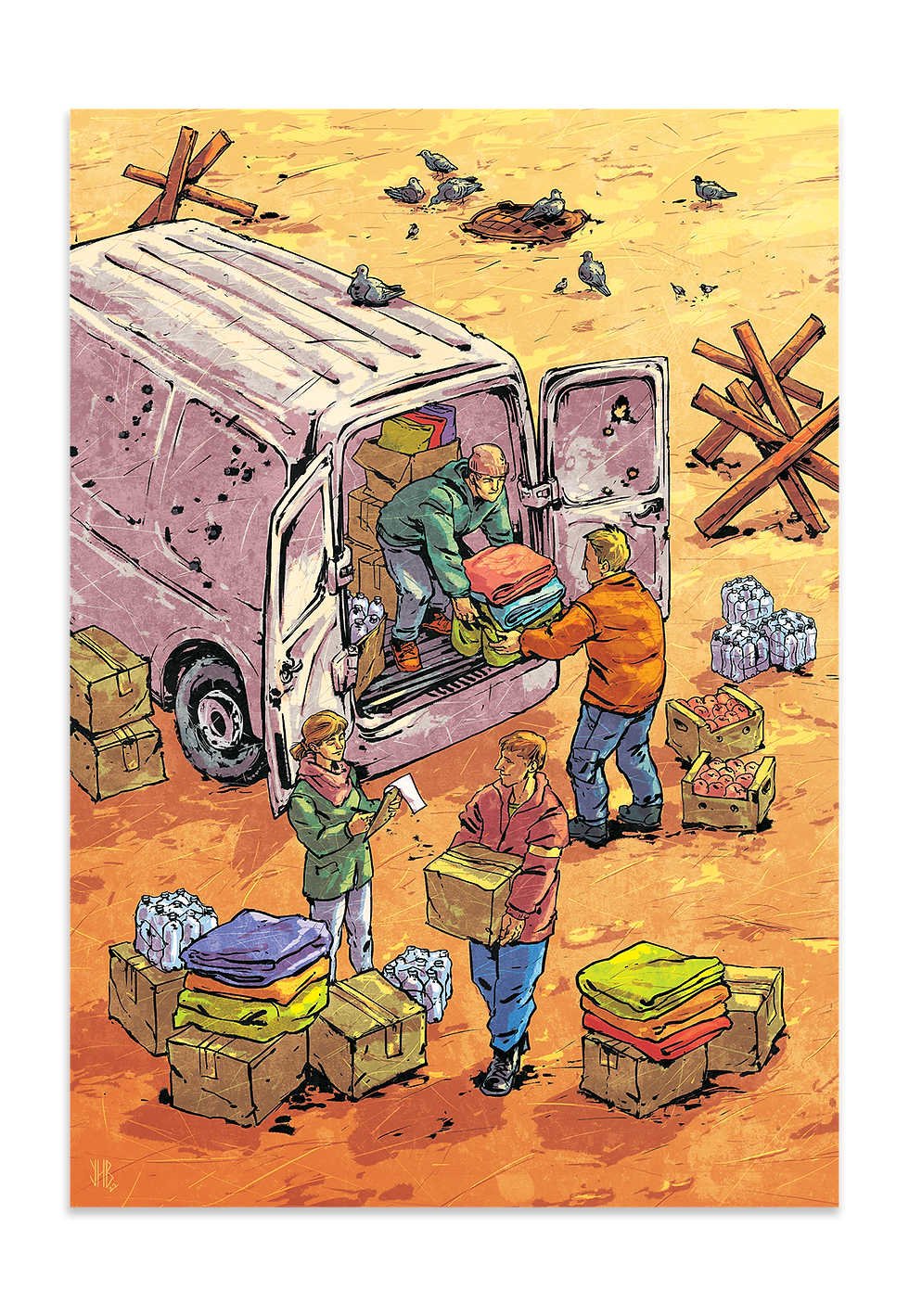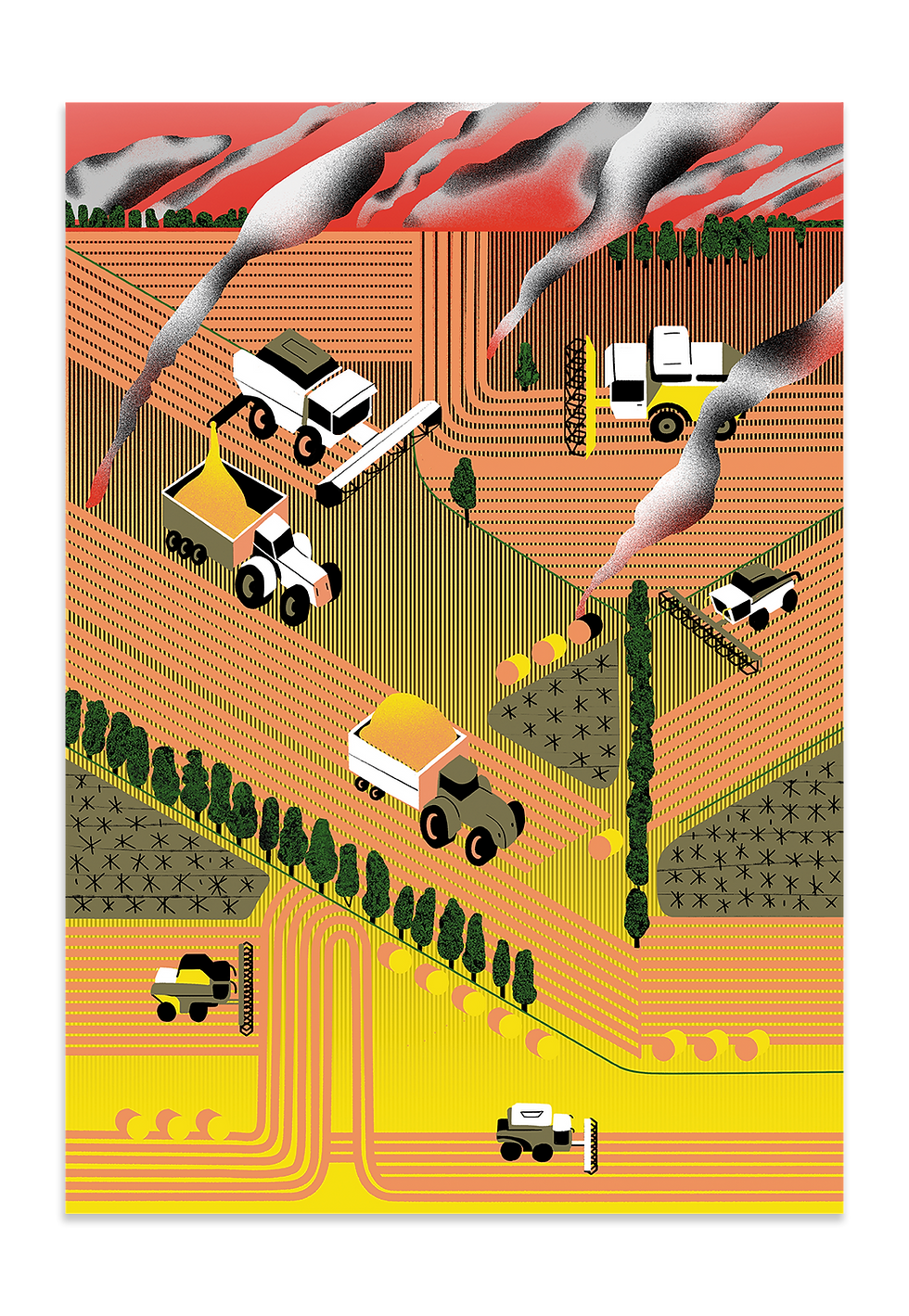Return of liberated cities to life
- Pictoric

- Mar 17, 2024
- 2 min read
Illustration: #JuliaTveritina

//
Many cities and towns seemed uninhabitable in the first days after the liberation of Kyiv Oblast from the occupiers. However, they looked completely different just within a few weeks. Volunteers cleaned the streets and helped residents repair destroyed houses; municipal workers restored damaged communications and planted flowers where the craters from shelling had recently deepened. Today, it is hard to believe that there were mutilated bodies of Ukrainians or burning enemy equipment on some streets. Everyone strives to heal the damage from the war as soon as possible and to restore the previous comfort in their hometowns.
More people were willing to volunteer in Bucha, Irpin, Borodianka, and other settlements than the local authorities could manage. Usually, several hundred people come to one city per day. The record in Irpin amounted to 600 volunteers on April 10. These were primarily Kyivans who owed the satellite cities the fact that the Russian army could not enter the capital.
First, volunteers cleared the roads so vehicles could pass freely. Afterward, they went to roadsides, parks, houses, and sewers. Even though minesweepers inspected the cities in advance, the volunteers had to be constantly vigilant: mines could still be found both on the streets and in residential buildings because the occupiers left many surprises behind.
Volunteers cleaned public places very quickly: they managed to clean up to 20% of the streets in Irpin in one day. However, there is still enough work to do after the Russian invasion. Locals need help repairing their destroyed houses: fix the roof, remove debris, patch holes, and install new windows or doors. Local authorities also actively arrange temporary housing in de-occupied territories, such as modular houses. People who have lost their homes can move in as soon as possible, thanks to the help of volunteers.







Comments